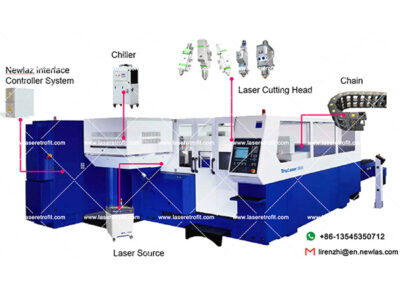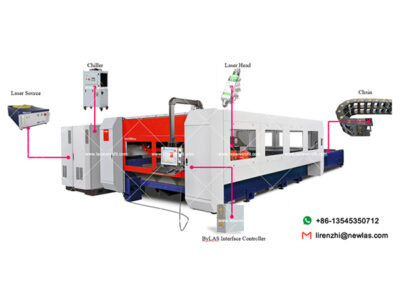Operating cost is one of the main cutting cost between CO2 and fiber laser, below we will compare it from two sides, let’s check it together.
Operating Cost
a. Fiber lasers as well as disc lasers do not require any lasing gases to generate the beam. CO2 lasers require Helium, Nitrogen, and Carbon dioxide at least.
b. When it comes to electricity costs, fiber lasers are significantly cheaper and more environmentally friendly than CO2 lasers.
The volume of CO2 laser generator is large, the transmission medium is air, and the straight-line propagation of optical path completely depends on the reflector. The optical path decay is fast, the energy loss is large, and the photoelectric conversion rate is low, only 10%.

4, 5, 6 Angle reflector 7. Focusing lens
The optical fiber laser adopts multiple groups of multimode pump diodes as the laser source in parallel. The generated laser is transmitted by the optical fiber, and the beam is enclosed in the optical fiber “curve propagation”, which is not affected by the external environment. The photoelectric conversion rate is high, up to more than 25%.


CO2 lasers have an efficiency of approximately 10%, therefore to power a 6kW laser, a 60kW power supply is needed whereas, a fiber laser cutter is approximately 45% (can be up to 50%) efficient so only a 13kW supply is needed. Clearly, as the laser power increases so will the electricity costs of the machine due to the need for a larger chiller. However, for the same power, a chiller for a CO2 laser will have higher electricity costs.
The electrical requirements of the extraction system will depend on the size required: as laser power increases so does the extraction system required. Additionally, as the cutting table area increases so will the power requirements of the filtration system.
Overall, the significantly reduced electricity costs of a fiber laser machine can result in huge cost savings for cutting applications.
Below is an approximate total cost comparison for your reference.

So far, after checking these three articles about cost comparison, we believe that you have a general understanding for the costs between CO2 and fiber laser cutting machine. Just take a small step, it will be a big step up in your business. Newlaz is waiting for your consultation for retrofitting Bystronic or Trumpf old CO2 laser cutting machine.






